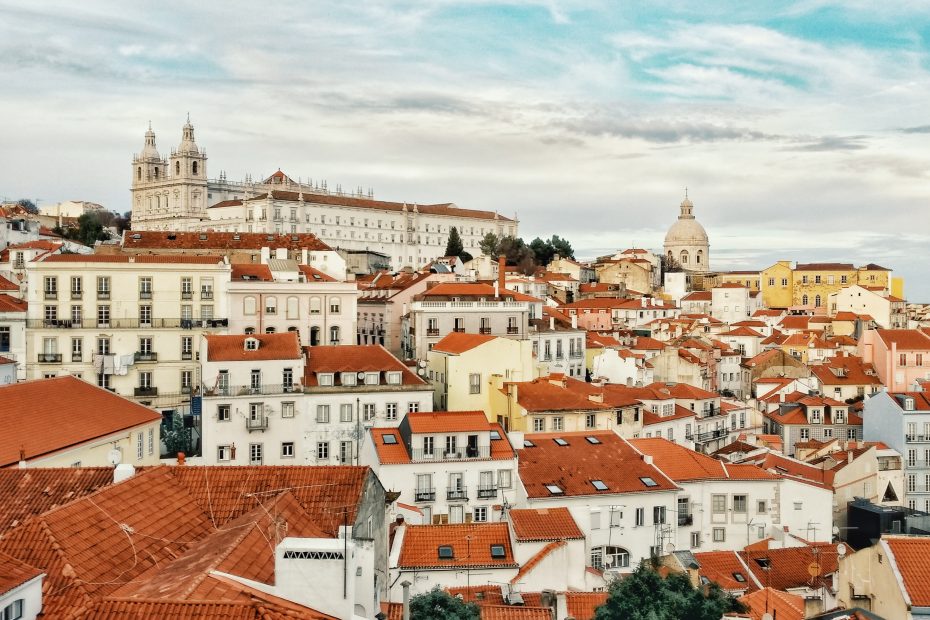Portugal is home to vibrant, historic cities full of color, culture, and charm. Two of its most famous cities are Porto in the north, and Lisbon, the capital, located further south. Though only about 300 km apart, Porto and Lisbon each have their own unique ambiance and identity. Let’s explore these two jewels of Portugal, and the journey between them.
Table of Contents
Porto: Full of Tradition and Character
Perched on the hills overlooking the Douro River, Porto enchants visitors with its winding cobblestone streets and medieval buildings. As the second largest city in Portugal, Porto brims with history, art, and tradition.
The Ribeira district along the riverfront bursts with color. Here you’ll find rows of tiled townhouses, lively bars and restaurants, and bustling plazas. Don’t miss taking a cruise along the Douro to admire the district from the water.
Porto is also famous for its production of port wine. At port wine cellars across the city, you can taste and learn about this sweet, fortified wine. Some cellars dated back centuries. The centuries-old Clerigos Tower offers panoramic views over the whole city.
Porto’s local cuisine reflects its coastal location. Try the hearty Francesinha sandwich, Bacalhau cod dishes, and fresh grilled sardines. Be sure to pair your meal with the famous port wine!
Traveling from Porto to Lisbon
The most common ways to travel from Porto to Lisbon are by train, rental car or plane. The direct train takes 2.5 to 3 hours, traveling south through beautiful countryside dotted with charming towns.
Driving allows flexibility to stop along the way. Interesting stopping points include Coimbra, known for its medieval old town and University of Coimbra. Alternatively, you could visit some surf towns along the central Silver Coast like Figueira da Foz or Nazare.
By air, flights take just over an hour. This is the quickest way to travel between the cities.
Lisbon: Portugal’s Cosmopolitan Capital
As the largest city in Portugal, Lisbon brims with energy. Set on seven hills and overlooking the Tagus River, Lisbon enchants with its pastel-colored buildings, winding lanes, charming funiculars, and bustling plazas.
The iconic Belem Tower, built in the early 1500s, stands guard next to the Tagus. Nearby, the 16th-century Jeronimos Monastery dazzles with its ornate late Gothic architecture. For a taste of old Lisbon, explore the Alfama district: a labyrinth of medieval streets, tile-adorned buildings, sidewalk cafes, and Fado bars.
Seafood features prominently in Lisbon’s cuisine. Try the ubiquitous grilled sardines or Pastel de nata, the famous custard tart pastry. Of course, you’ll want to sample delicious local wines as well!
Comparing the Two Cities
While Lisbon is almost 5 times larger than Porto, both offer vibrant culture and history. Porto feels more intimate and traditional, with its winding alleyways and medieval architecture. Lisbon has more of a buzzing, cosmopolitan vibe. Both cities boast lovely waterfront areas along rivers.
Architecture styles differ as well – Porto with more medieval buildings, and Lisbon representing various eras such as Manueline, Baroque, and modern. But you’ll find lovely tiled buildings and cobblestone streets throughout each city.
No matter where you visit in Portugal, you’ll find warmth, hospitality, and no shortage of culture, history and beauty. By traveling overland from Porto to Lisbon, you’ll be rewarded with an intriguing glimpse into the diversity of landscapes and communities that make the country so captivating.
Conclusion
A trip from Porto to Lisbon allows you to experience the best of Portugal’s cities. Porto enchants with its rich history and culture. While Lisbon buzzes with energy as a cosmopolitan capital. The journey between the two cities treats you to beautiful countryside and interesting stopping points. Both Porto and Lisbon offer delicious cuisine, historic sites, and vibrant local life. Whatever you prefer in a destination, Portugal’s cities will captivate you!
FAQs
What is the best way to travel between Porto and Lisbon?
The options are train, rental car or plane. The train takes 2.5-3 hours directly between the cities. Driving allows flexibility for stopping along the way. Flights take just over an hour.
What are top attractions to see in Porto?
Don’t miss Porto’s Ribeira riverfront district, clericos Tower, and the port wine cellars to taste this famous local product.
What are top attractions to see in Lisbon?
Top sights include Jeronimos Monastery, Belem Tower, and Lisbon’s historic Alfama district.
What is a good stopping point between Porto and Lisbon?
Coimbra makes a great midpoint stop. It has an preserved medieval old town and important university.
What type of cuisine is found in Lisbon and Porto?
Both cities offer delicious seafood dishes like grilled sardines, cod, and shellfish. Don’t miss Porto’s Francesinha sandwich and Lisbon’s sweet pasteis de nata!
